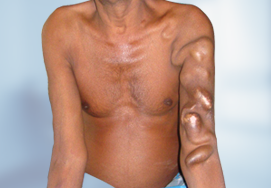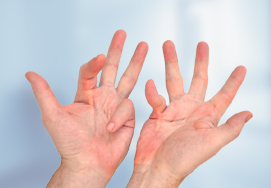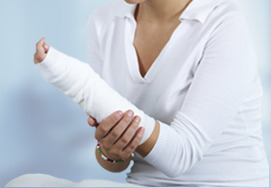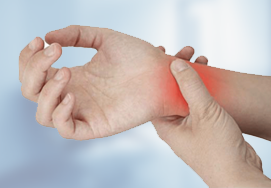Dupuytrens contracture
Recommended when your hand function is limited and the disorder is progressive, you have trouble to grasp the objects and you are unable to put your hands in your pocket
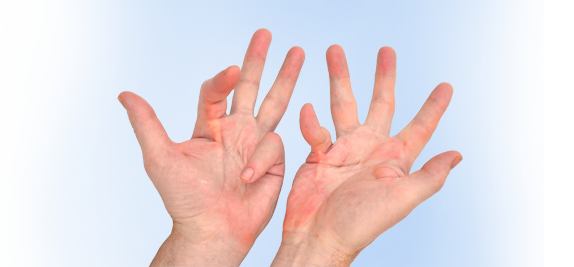
- What is Dupuytren contracture?
- What causes Dupuytren’s Contracture?
- What are the typical symptoms?
- What are the types of the surgeries?
- Which individuals are eligible for the surgery?
- How should I prepare for the surgery?
- What will happen during the surgery?
- What are the chances of success?
- What are the possible complications of the surgery?
- What would happen in the long run if I receive no treatment?
What is Dupuytren contracture?
Dupuytren’s contracture is an abnormal thickening of the tissue just beneath the skin. This thickening occurs in the palm and can extend into the fingers. Firm pits, bumps and cords (thick lines) can develop and cause the fingers to bend into the palm. This condition may also be known as Dupuytren’s Disease. Occasionally, the disease will cause thickening on top of the knuckles or cause lumps and cords on the soles of the feet (plantar fibromatosis).
What is Dupuytren contracture?
Dupuytren’s contracture is an abnormal thickening of the tissue just beneath the skin. This thickening occurs in the palm and can extend into the fingers. Firm pits, bumps and cords (thick lines) can develop and cause the fingers to bend into the palm. This condition may also be known as Dupuytren’s Disease. Occasionally, the disease will cause thickening on top of the knuckles or cause lumps and cords on the soles of the feet (plantar fibromatosis).
What causes Dupuytren’s Contracture?
The exact causes of Dupuytren’s Contracture are not yet known, although it may be genetically linked. Current research suggests a problem with inflammation in the palm of the hand leading to the formation of thick “scar like” bands but it commonly occurs in patients with diabetes, epilpesy, and alcoholic disorders. It mainly affects the fourth and fifth digits.
Men are mostly diagnosed with this disease when compared to women.
What are the typical symptoms?
When a thick “scar like” band forms along the palm of the hand and extends onto a finger, the finger begins to flex inwards towards the palm. The patient will then be unable to fully extend the finger either actively or passively. This flexion is usually progressive and if left untreated the patient will lose the ability to fully straighten the fingers.
Grades of severity
The grading system for Dupuytren disease severity
- Grade 1 – Thickened nodule and band in the palmar aponeurosis; may have associated skin abnormalities
- Grade 2 – Development of pretendinous and digital cords with limitation of finger extension
- Grade 3 – Presence of flexion contracture
How can it be treated?
Once the “scar like” band has begun to form and the finger flexion is progressive, surgery is the best option.
What are the types of the surgeries?
In mild cases, especially if hand function is good, only observation is needed. A lump in the palm does not mean that treatment is required or that the disease will progress.
There are two most common surgical techniques. They are open and needle fasciotomy.
Open fasciotomy: In this procedure, the shortened connective tissue is cut to relieve the tension.
Needle fasciotomy: It is also known as needle aponeurotomy or percutaneous needle fasciotomy. In this procedure, a sharp blade or a very fine needle is inserted into the hand to divide the cord under your skin.
Fasciectomy is a surgical procedure that involves removing of the thickened tissue. It is of three types.
- Regional Fasciectomy: The connective tissue is removed through a single and large incision. It is the commonly used procedure.
- Segmental Fasciectomy: In this procedure, single or more smaller cuts are made in the skin in which small segments of connective tissue is removed.
- Dermofasciectomy: The affected connective tissue is removed along with the overlying skin, and the wound is sealed with a skin graft.
None of the above procedures is ideal: they often provide only partial, temporary improvement. Open surgery lasts the longest, but can have a long recovery and possible complications. Minimally invasive procedures have shorter recovery and lower complication rates, but on the average don’t last as long before recurrence. There is no prevention and no cure – yet.
Which individuals are eligible for the surgery?
Surgery is recommended by your surgeon when,
- your hand function is limited and the disorder is progressive
- you have trouble to grasp the objects
- you are unable to put your hands in your pocket
How should I prepare for the surgery?
You have to clearly communicate with your surgeon. You should discuss your expectations and clarify if you have any doubts regarding the surgery. Your surgeon may perform a physical examination and thorough review of your medical history before initiating the surgery.
Before the surgery, you need to:
- Quit smoking and alcohol for a speedy recovery.
- Stop taking medications like aspirin to prevent bleeding
- Do not eat or drink anything before the surgery.
- Take the medication as prescribed by your surgeon.
What will happen during the surgery?
Surgery is performed by making an incision in the palm of the hand and in the involved finger. The thick “scar like” band is then removed and the finger is extended. The hand is then splinted for 3 days for comfort and active range-of-motion exercises initiated 3 days after surgery.
An extension hand splint is worn at night for several months to prevent recurrent contracture. Returning to everyday and occupational activities is encouraged at the earliest opportunity
What are the chances of success?
Dupuytren’s Contracture is a very difficult problem to treat. Five to ten years after surgery, the possibility of recurrence has been found to be as high as 50%. The possibility of recurrence depends not only on the surgery but also on the rehabilitation program following surgery and on the motivation of the patient.
What are the possible complications of the surgery?
Each finger has two nerves and two arteries running along the side of the finger. Damage to either one of the nerves and/or one of the arteries of the involved finger is possible. If a nerve is injured, it can be repaired but a portion of the finger may become numb until the nerve has healed. If one of the arteries is injured, then repair is not always necessary because the other artery can provide sufficient blood flow to the finger. Skin loss over the area of the incision can also occur but is relatively unusual. If this were to happen a skin graft may be required.
Some of the possible complications are
- Damage to the nerves
- Splitting of the skin
- Joint stiffness
- Wound failure
- Infection of the wound
- Hematoma
- Scarring
- Edema
- Skin sloughing
Seek the medical attention immediately, if you have
- Fever
- Pus draining from the incision
- Signs of infection
- Loose stitches
- Change in color of hands and fingers
- Numbness
- Unable to move fingers
- Pain
What would happen in the long run if I receive no treatment?
If the Dupuytren’s Contracture is not treated surgically, then the involved finger(s) will progressively become more flexed and eventually the patient will not be able to extend the finger at all. If many fingers are involved, loss of function of the entire hand may occur


